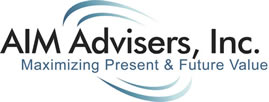
RETURN TO AIMZINE FRONT PAGE | June 2010
Meet the AIM Players...
Mark McGowan of AIM Advisers Inc
Aimzine is a online magazine for investors and everyone involved with AIM companies. If you would like to register (it's free) to read Aimzine each month please click HERE
Promoting AIM in the USA
Did you know that there are 57 US companies listed on the AIM market? Furthermore, did you know that US AIM companies have outperformed the AIM index over the last 3 years by a considerable margin – see the table.
|
AIM All-share index |
US AIM-listed companies |
2007 |
-1% |
+30% |
2008 |
-63% |
-44% |
2009 |
+66% |
+68% |
These facts I gleaned from a fascinating conversation I had with Mark McGowan, Managing Director of US-based AIM Advisers, Inc. Mark founded AIM Advisers some 18 months ago to help US companies who wish to list on the AIM market. As a former Finance Director of AIM-listed DDD Group he is well qualified to assist US companies, particularly in the lead up to an Initial Public Offering (IPO).
Potential
My first question was naturally: ‘what are the benefits to a US Company to list on AIM?’ The answer is that for the right companies there are considerable advantages and Mark is optimistic that these compelling reasons will help him to attract significant business over the coming years.
Mark spent much of the first year focused on building relationships in London, most notably with nomads and brokers. More recently, Mark has turned his attention to marketing activities in the US. When I spoke to Mark in mid-May he was in Houston, almost half way through a 12 week driving tour covering seven key US cities - Phoenix, Austin/San Antonio, Houston, Dallas, St. Louis, Minneapolis/St. Paul and Denver/Boulder. On this tour Mark is presenting to key advisors such as accountants and lawyers and key investors such as VCs and PEGs. In the first 4 weeks of the tour Mark had already completed 70 meetings.
Mark explains that, at present, he is simply making advisors and investors aware that AIM is an option for US companies when seeking their next stages of growth capital and access to public shares for acquisitions. Many of the firms he has met to date on his tour have had little awareness of the considerable attractions of AIM. However, Mark’s view is that US companies need to tick a number of boxes before considering an AIM IPO.
Mark has been pleased with the early interest shown in AIM by US advisors and investors and, when looking at the benefits, it is not difficult to understand the interest.
AIM vs NASDAQ
Small US growth companies often aspire to list on the US NASDAQ exchange. However, AIM can provide similar benefits to NASDAQ but with some considerable savings. The cost of an IPO on AIM is broadly similar to the cost of listing on the US NASDAQ exchange. However, AIM has a significant advantage when comparing the costs of maintaining the listing due to the high regulatory burden in the US, where companies need to comply with the requirements of the Exchange Act and Sarbanes-Oxley (SOX).

Mark McGowan
12 week driving tour
However, it is not just a matter of cost. Mark told Aimzine: ‘I think a more fundamental point from a U.S. company's point-of-view, beyond less regulation and less cost on AIM vs. NASDAQ, is that a company with a market capitalization of $100m will actually be paid attention to on AIM since it will be in the top 15%. I describe this main benefit to those with whom I am meeting as the opportunity for a quality, growth-oriented U.S. company to be a 'big fish in a small pond'. Investors will actually care about a company of this size on AIM and equity research will be written. On NASDAQ, 1,000 of the 2,800 companies have a market cap, below $100m but no one cares about these small companies which are often described as NASDAQ's orphans. Less regulation and less cost on AIM is just a follow-on benefit. What the company really wants is the ability to raise capital and get noticed so that they can use their public shares for acquisitions and/or attract the attention of larger corporates who may consider paying a significant premium over the market price to acquire the company which is what I call the 'Trojan horse strategy'.’
In his presentation Mark suggests that to be suitable for AIM, a US Company should be profitable, or close to profitability, and be able to command a market capitalisation of over $50 million. At this level there is scope to grow to around $400 million where it then begins to make sense to list on NASDAQ, given the liquidity and valuation advantages. A $400 million company should be big enough to bear the internal and external costs of the Exchange Act and SOX.
One key message that is conveyed is that AIM is a ‘real stock exchange’ and the company needs to have the right mindset before embarking on the process of listing. For example, the due diligence required for an AIM listing is no less than that required for NASDAQ.
a big fish in a small pond
institutions have fairly
deep pockets
Significant Savings
When looking at costs of on-going listing, AIM Advisers estimates that a NASDAQ listing will cost $2 - $3 million per year compared to $320 to $480 thousand on AIM. This is one of the reasons AIM Advisers offers for why companies under $400 million may be better served on AIM. Therefore, it is surprising to note that 75% of the 2,800 companies on NASDAQ are capitalised at less than $400 million.
Mark explains: ‘The reason why many of these 2,100 companies on NASDAQ do not delist or utilize AIM's Designated Markets Route and then delist is because they already have more than 500 shareholders and would have to comply with the Exchange Act and SOX anyway. The genie is out of the bottle and it is impossible to put him back in. This is a key point for a U.S. company considering its next steps. I think many would be better served by taking their (suitable) $50m, $100m, $150m market cap. company to AIM with a 3 - 5 year view and see if they can actually grow the business as they believe they can and, if so, great, now they're ready for primetime; dual list on NASDAQ and either strike off the AIM listing or, more likely, move it up to the Main Market where even more investors are able to invest. My role in acting as a strategic adviser to the company is key in terms of being able to identify the most suitable nomads and brokers along the key attributes of reputation, sector and size focus, initial and secondary capital raising ability, sectoral equity research analysts and, finally, the all-important sales and trading aftermarket since much of the economic incentive for the broker vanishes after the IPO but the company wants to ensure that its shares are liquid since a core strategy of many is to be able to use those shares for acquisitions.’
One interesting statistic in comparing AIM with NASDAQ is that 62% more capital has been raised on AIM than NASDAQ since 2005.
Mark is keen to stress that AIM is not right for everyone and as well as the size and profitability criteria, he believes it is preferable for the candidate company to have some overseas exposure, ideally with some business in Europe.
Once a company has decided that it is interested in an AIM listing, AIM Advisers will work with the company to determine the suitability of an AIM IPO by viewing the company through the eyes of potential nomads and brokers, assisting with their selection and the appointment of the various other key advisors as well as supporting the company with three hands-on services through the IPO process.
Aimzine Comment: At Aimzine we have closely followed one US company - Planet Payment. Planet’s share price has more than doubled since we first covered the company last year. We will be keeping watch for further suitable US Companies, particularly those that are assisted by AIM Advisers. Mark views AIM as a 3 to 5 year ‘bridge’ to grow quality companies from $50 million to $400 million. UK Private investors may be keen to help such companies across the bridge!
role as a strategic
adviser is key
AIM as a 3 to 5 year bridge
Mark McGowan is the founder of AIM Advisers, Inc., a California-based business that helps small and medium-sized, growth-oriented US companies complete IPOs on Aim. Mark was formerly the chief financial officer of DDD Group plc, an Aim-listed company with its corporate headquarters in the US. Mark is a qualified accountant, having previously worked for Grant Thornton in Los Angeles, Hong Kong and throughout the Asia-Pacific region.

Written by Michael Crockett
Copyright © Aimzine Ltd
RETURN TO AIMZINE FRONT PAGE | June 2010
| Meet the Players Archive | |||||||||||||||||||||||||||||||||||||||||
|
|||||||||||||||||||||||||||||||||||||||||
This article is the copyright of Aimzine Ltd. No part of the article should be copied, reproduced, distributed or adapted in any way without our prior consent. |